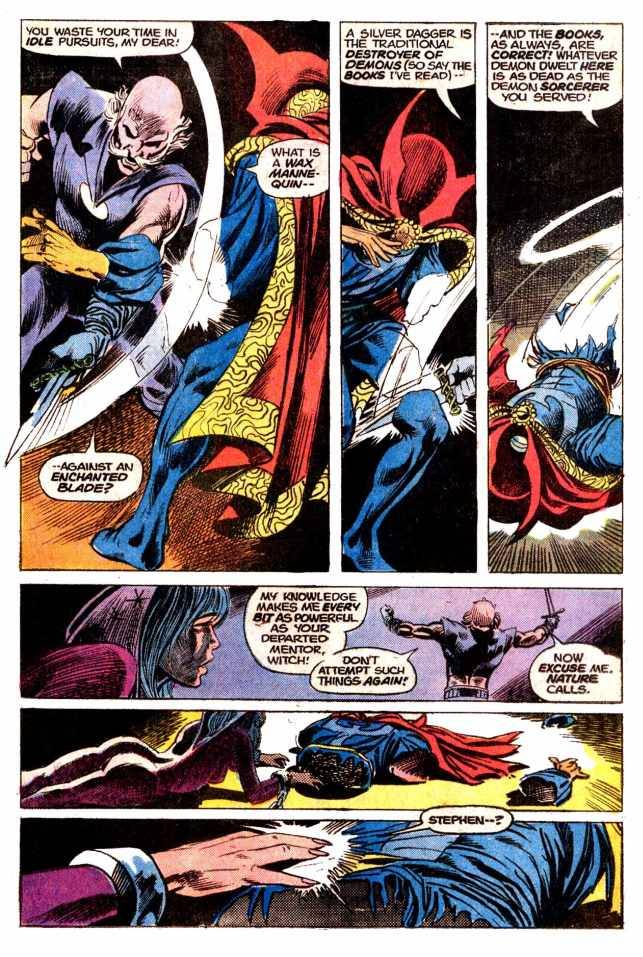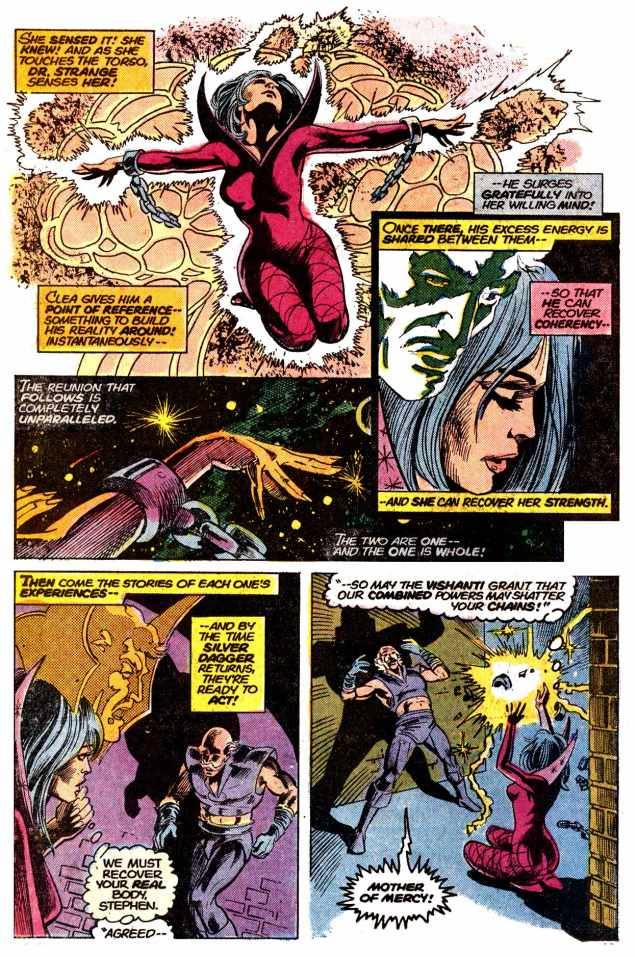
These issues complete the story launched in issue #1, which was a fantastically psychedelic trip through the dimension that exists inside the Orb of Amagatto. The story begins with a terrific beheading of the titular hero. After last issue, Clea is held hostage by a man called Silver Dagger, who has stolen the Orb and believes Dr. Strange to be dead.

He spends his waking hours trying to convert Clea away from her love for, and faith in, Dr. Strange’s version of the Mystic Arts. Dagger is an excommunicated Catholic Church Cardinal and a fanatic, seeking converts.


Englehart didn’t shy away from controversial, heavy topics.
Also note that he titled this story “A Separate Reality,” after the book by renowned (and now debunked) sociologist and proponent of Peyote Carlos Castaneda. Steve and many other members of the Marvel Bullpen were heavy users of hallucinogenics.


Meanwhile, inside the Orb, Dr. Strange encounters wild hallucinations of his friends and foes, and must figure out what is causing it all. It’s wonderful to see Brunner’s incredible illustrations taking on so many Marvel heroes. But who is the guy who Spidey calls The Captain-the one with the red costume and the winged clock on his chest? It’s Fawcett Comics’ Golden Age character Captain Midnight, which earns this issue a “cross overs” tag. I wish I knew the story behind why Brunner drew him in here. Also, look at the white-gloved hand of the guy Hawkeye snarks at, who has clearly been drunk under the table. I swear I can see Green Lantern’s power ring there.
Also, they’re all drinking tea, not booze, which is clearly another reference to Alice in Wonderland. (In issue #1, Strange meets a hookah-smoking caterpillar.)
Issue #3 has an original framing sequence around a reprint of the old Stan Lee/Steve Ditko origin story from Strange Tales #126-127. Such a great comic. It’s kind of a life-before-your-eyes excuse to let the creators catch up to their deadline. Back then, reprinting older issues wasn’t a total copout, because the idea of trade paperbacks wouldn’t exist for another 30 years.
Ultimately, it turns out Strange is battling to survive Death herself (with a cameo by Eternity). He survives by merging with both Eternity and an Egyptian Ankh, which apparently is a metaphysical device that wards off death. Upon his victory, the ghost of The Ancient One tells him that now he is immortal to aging, and can only be killed in battle. The Ankh of Enduring Life will protect him from death.
I really like how Englehart blends all kinds of faiths in these issue-except he’s clearly anti-Catholicism. There’s several references to tenets of Eastern religion, especially in Strange’s emphasis on the use of meditation (not drugs) to find reality.

Which makes sense, since Strange’s education began in the Himalayas.
Note: These issues formed the basis for the first Dr. Strange movie, produced by Universal Studios.
